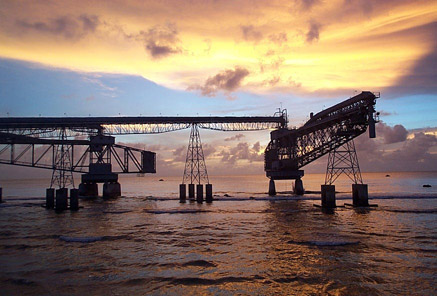Nauru
Geography
Land Use
People
Economy
Water Statistics
|

Status of Water Resources
Sources of freshwater for Nauru’s island communities are restricted to:
- Rainwater
- Imported water
- Shallow unconfined groundwater (generally within less than 2 m of the surface)
- Desalination (one large evaporative desalination plant and four small RO desalination plants).
The major issues and concerns are as follows:
- There is not a secure supply of drinking water available to maintain health and wellbeing;
- High energy input is required for the desalination plants
- There may already be over-extraction of groundwater around the Bottom side
- There is some contamination of the groundwater occurring now, even though it is the best source of future water supply
- The sustainable yield of the groundwater has not been determined (but a study is planned for the near future)
- There is a need to control the discharge of wastewater adjacent to wells used to extract non-potable water and to upgrade local sanitation practices to composting-type toilets or similar arrangements
- There is very little monitoring or information collection on water quantity and quality, and hence no strong base for future planning
- There has been very little investigation of the environmental implications of the changes in land use and water use on the island
- Droughts have a major effect on the supply of water – particularly for roof water catchments
- There is a need for improved water governance and local skills
- Land and water ownership are still to be resolved for groundwater extraction.
Diagnostic Report
Demonstration Proposal
Hot Spot Analysis
Information on this page obtained from Integrated Water Resources Management programme's Diagnostic Reports (SOPAC 2007)
















